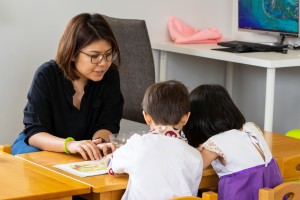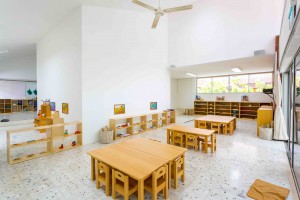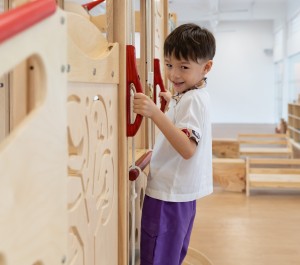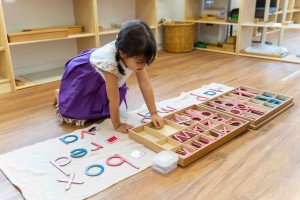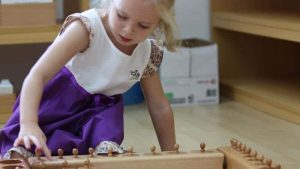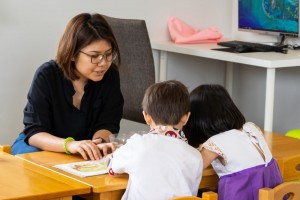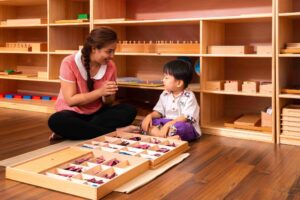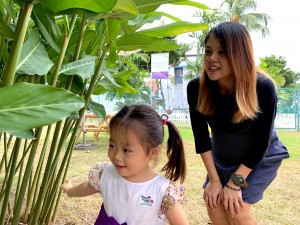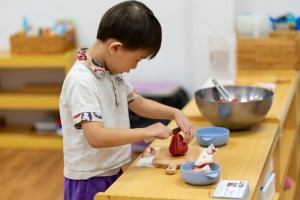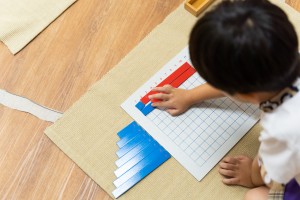
Making Sense of Mathematics
Dr. Maria Montessori believed in the holistic education of the child, and she created a curriculum that followed children’s natural development in five key areas: mathematics, sensorial, language, culture, and practical life. Mathematics and sensorial development are often discussed together because sensorial materials help develop a child’s mathematical mind. The mathematical mind is what makes Montessori’s method of teaching mathematics uniquely effective. Instead of expecting children to only memorize sequences or processes, we teach children to understand and appreciate the logic and beauty of mathematics through hands-on materials and exploration at their own pace. They learn numeration, geometry, arithmetic, and even algebra with a firmer foundational understanding of the concepts than if they had just memorized facts. What exactly is the mathematical mind? Dr. Montessori believed that all children have mathematical tendencies and can enjoy mathematical study and work. Children like order, exactness and orientation, and they are also capable of imaginative, abstract thought. Montessori materials incorporate these traits into their design, allowing the child to manipulate materials to create order and exactness, and to create a concrete basis for abstract thought. Mathematics begins long before children can count. Dr. Montessori knew that children learned best through sensory engagement, so she created a whole curriculum for sensorial development. Sensorial materials develop the mathematical mind by introducing children to concepts such as shape, size, dimension, sequence, order, precision, and even mathematical language. These materials include: The Pink Tower This classic material is made of 10 cubes. The smallest of which measures 1 cm cubed and the largest is 10 cm cubed. In this way children are exposed to the concept of base ten, which is also taught through Brown Stair. As children work with these base ten materials they can practice language such equal to, bigger than, and smaller than. Red Rods Children begin with the red rods, learning visual discrimination of length and how to order from smallest to greatest. The next step is the number rods, a mathematics material which are the same length as the red rods but with the element of quantity. Now children are adding degree to their understanding of order. Binomial Cube One of the most unique Montessori materials is the binomial cube. It is a box containing two cubes and six prisms of specific colors. The direct aim is to solve the puzzle and correctly put the blocks in the box, but children are indirectly learning the concept of (a + b)³, wherein each block represents a term in the algebraic expression. Children in Montessori primary schools will revisit this material when they begin algebra. At about age four children enter the sensitive period for numbers. It is no longer enough to know the relative length or amount of something, they want to know the exact measurement! All mathematical learning begins with the concrete before it moves to the abstract and progresses through natural stages. Children must learn to associate numbers with quantity before they can begin addition and subtraction! Children start to work with materials such as: Spindle Box After learning numbers using the sandpaper numbers, and quantity with the number rods, children will learn to combine these two concepts. The spindle box is one of the first introductions to matching quantity and symbol, or number. The spindles that they count represent the concrete quantity, while 0 – 9 painted on each box represent the abstract numbers. This material also introduces the concept of zero. After counting all the spindles and placing them correctly, there will be no more spindles for the box labeled “0”. This is a hands-on way for children to discover and understand the concept of zero on their own. This is quickly demonstrated in this video clip: Decimal System Children are introduced to units, tens, hundredths and thousandths with beautiful beaded materials. Units are represented by a single bead, tens by a bar of ten beads, hundredths by a square of one hundred beads, and thousandths by a cube of one thousand beads. This is a tangible way for children to learn about the decimal system. They will use these materials to physically represent abstract numbers and to do functions such as addition and subtraction. As children master concepts they will begin to introduce more abstract work–writing and doing paper calculations– and will at times move away from the materials and return when learning new concepts. Because of these materials children have a robust understanding of mathematics that will help them in all future studies.


